
Brienner Strasse or simply Brienner (Brienner Straße) - a street that is one of the four royal avenues (main boulevards) Munich.
Prior to the construction of the street, there was a path of the Wittelsbach dynasty that ruled in Bavaria, which ran from the royal residence in the center of Munich (today's Munich residence) to the Nymphenburg Palace, which was the summer residence of the rulers.
The Boulevard was built in neoclassical style from 1812, during the reign of Maximilian I Joseph of Bavaria and his successor Ludwig I, in accordance with the plans of Karl von Fischer and Friedrich Ludwig von Scala.
Its called "Brienner Strasse" prospect was in honor of the battle near the French town of Brienne (29 January 1814).
Street Brienner located in the heart of Munich in Maxvorstadt (Maxvorstadt), which is the center of cultural life in Munich and is primarily known Habitat art (Kunstareal München) - the Museum quarter, known outside of the city (in Bavaria and in Europe).
The length Briennerstrasse is about a mile. The street stretches from the Northern edge of Munich's old town (the square Odeonsplatz underground station) in a North-westerly direction to Nymphenburger straße (Nymphenburger Straße), which, in turn, leads to the Nymphenburg Palace.
Today street Brienner is a carriageway, both sides of which are pedestrian walkways. Brienner Strasse crosses two significant areas of the city, and along the street are located buildings, some of which are significant historic sites - former mansions of the nobles of Bayern.

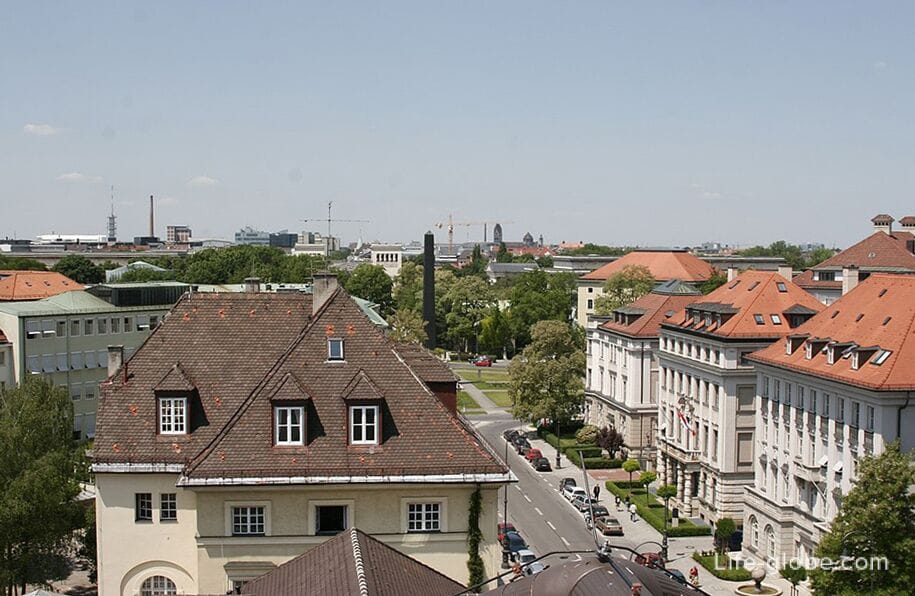
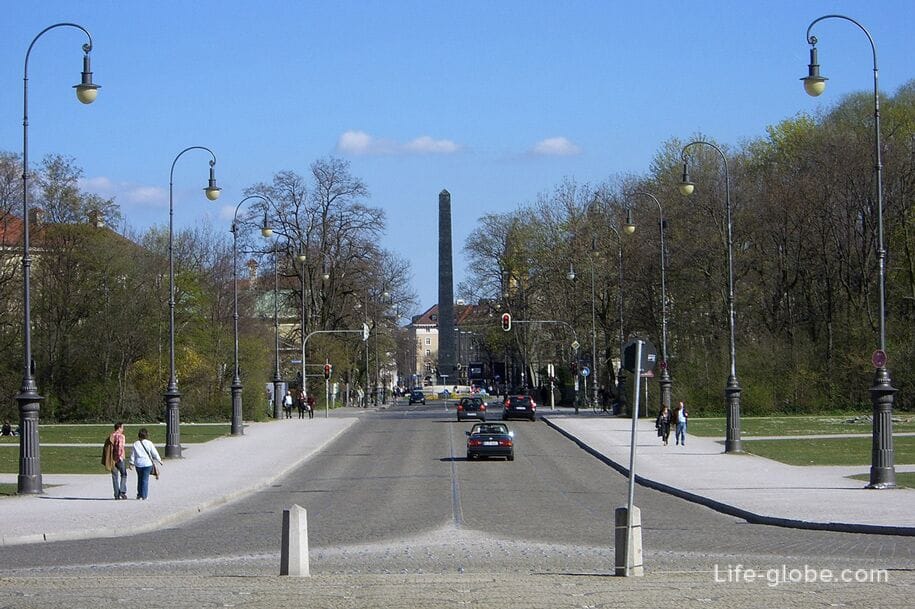
At the Eastern tip of Brienner Strasse, on the corner of the square Odeonsplatz, is My Palace (Palais Moy), which was built in the classical style since 1819, the project of the court architect Leo von Klenze.
The Palace had the interior lavishly decorated in different styles. During the history the building changed several owners.
During the Second world war the Palace was destroyed. In 1950 - 1952 the building was rebuilt, preserving, to a large extent, the classic model of the facade Klenze.
The Western facade of the former Palace overlooks the square Odeonsplatz, North - street Brienner Strasse, East into the inner courtyards of nearby buildings, and the South is adjacent to Teatinerkirhe (free Wi-Fi. Kajetan / Theater the Church of St. Caetano). Read more about the Palace of Moy...
View of the Western and Northern facades of the Palace My
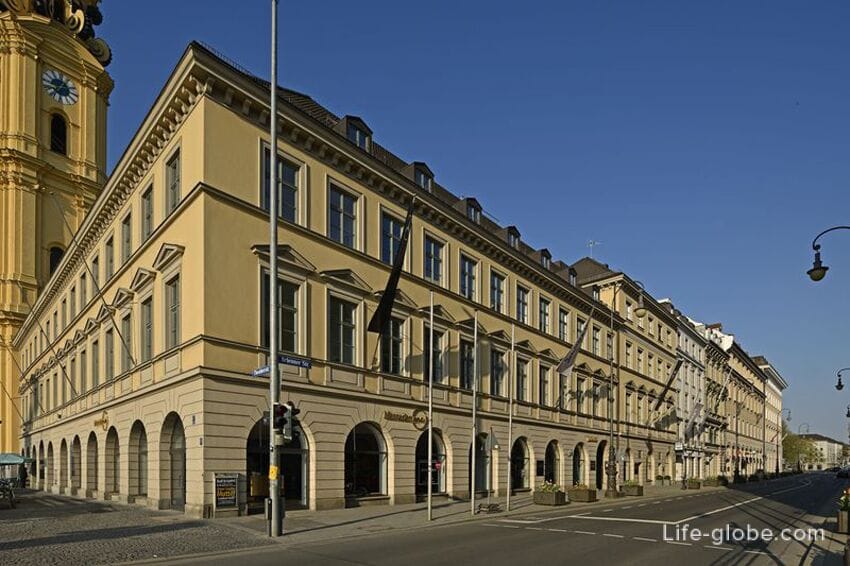
My Palace on the right, Theatinerkirche on the left (photo of the square Odeonsplatz underground station)
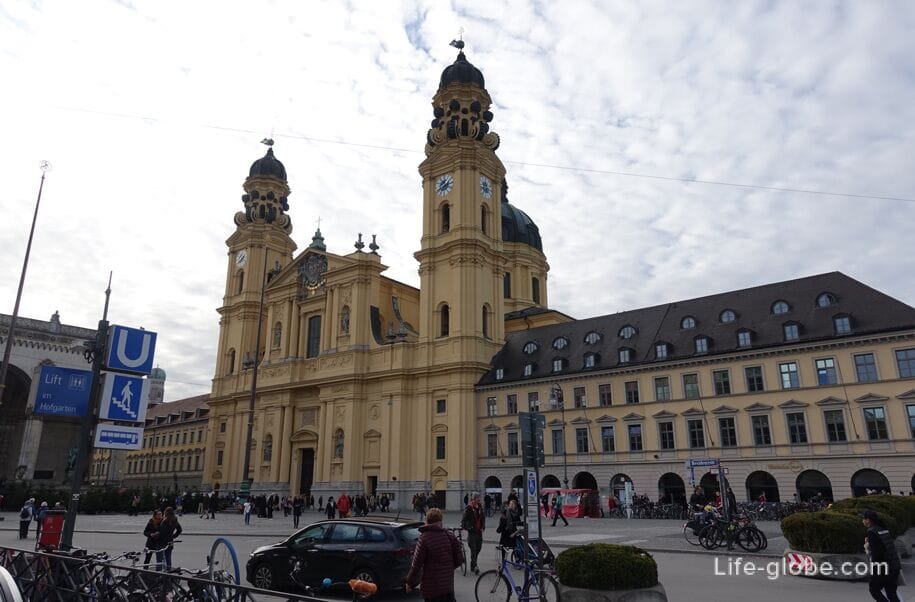
Area of Wittelsbach (Wittelsbacherplatz) is the Eastern extension of the street Brienner and the most beautiful square in the classical style in Munich.
Its current name the area was in 1827, when it was named in honor of one of the oldest noble families of Wittelsbach.
The area has an almost square shape. The center of the square is decorated with a bronze equestrian statue of the elector Maximilian I, mounted on a high pedestal in 1839.

Concentrated around the area's historic buildings such as:
- a former concert hall Odeon (Odeon Konzerthaus), built by order of king Ludwig I in the years 1826-1828 by the architect Leo von Klenze;

- the Ludwig Ferdinand Palace (Palais Ludwig Ferdinand), designed by Leo von Klenze in 1825-1926 years.
The architect himself lived in the house for 25 years. Since 1878, the Palace belonged to Prince Alfons and Ludwig Ferdinand of Bavaria;
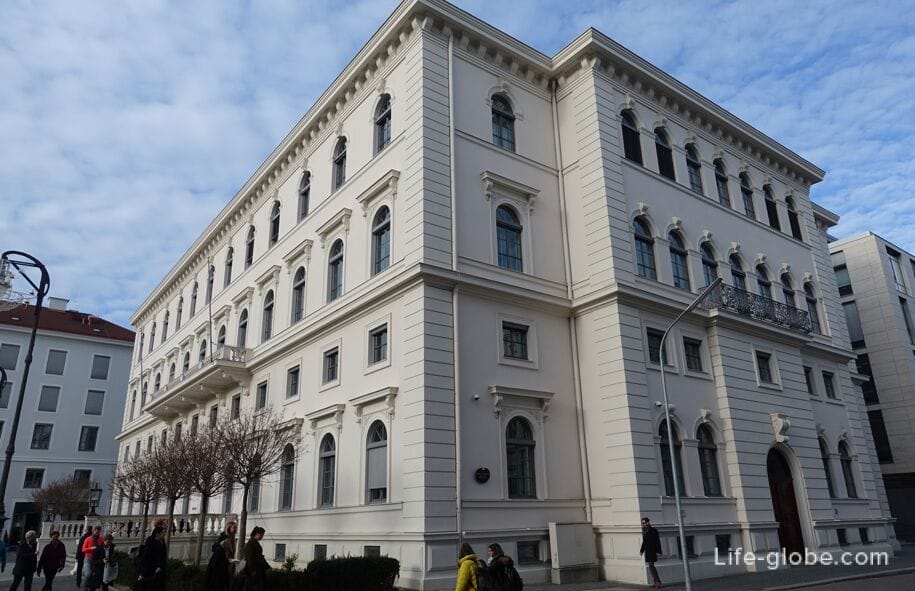
- Palace of Arko-Zinneberg (Palais Arco-Zinneberg), built in 1824-1825 years as a dwelling house according to the plans of Leo von Klenze for the family of Arko-Zinneberg. More about area of Wittelsbach...

"Café Leopold" ("Cafe Luitpold") - original building "Luitpoldblock", built between 1810-1812 years in the classical style as the first building outside the city walls.
The building was used as a brewery, in addition to the residential wing facing today's street Brienner.
In 1831 Ludwig Knorr (banker) became the owner of the building and in 1851, ceased to brew beer.
After the death of Ludwig Knorr in 1852 the house was sold to several owners, who subsequently changed rapidly.
Classic cafe opened in the building in 1888.
After the destruction during the Second world war the building was rebuilt, and the café reopened in 1948.
During the reconstruction of the surrounding buildings in the years 1886-1888 was created courtyard.
A small Museum above the café features photos and documents on the history of the house.
Home address: Brienner Straße 11. Website cafe: cafe-luitpold.
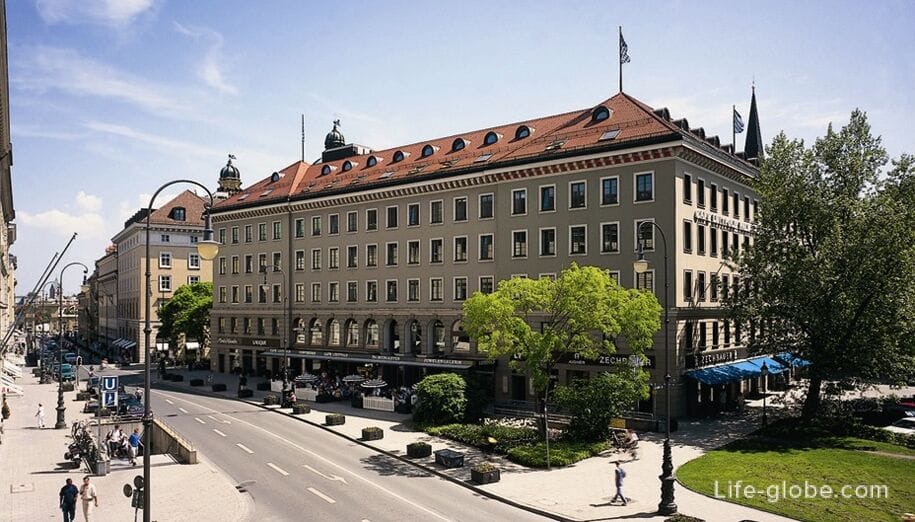
Ahtarsky Palace (Palais Eichthal) was designed by Leo von Klenze in 1818 and built after 1820 for the Royal court banker and co-founder of the Bavarian mortgage and exchange Bank - Simon Freiherr background Akhtala.
After the destruction of the Second world war preserved only the facade of the building. During the reconstruction of the building's interior was adapted to modern needs.
Today the building accommodates office and commercial premises.
Building address: Brienner Straße 12.
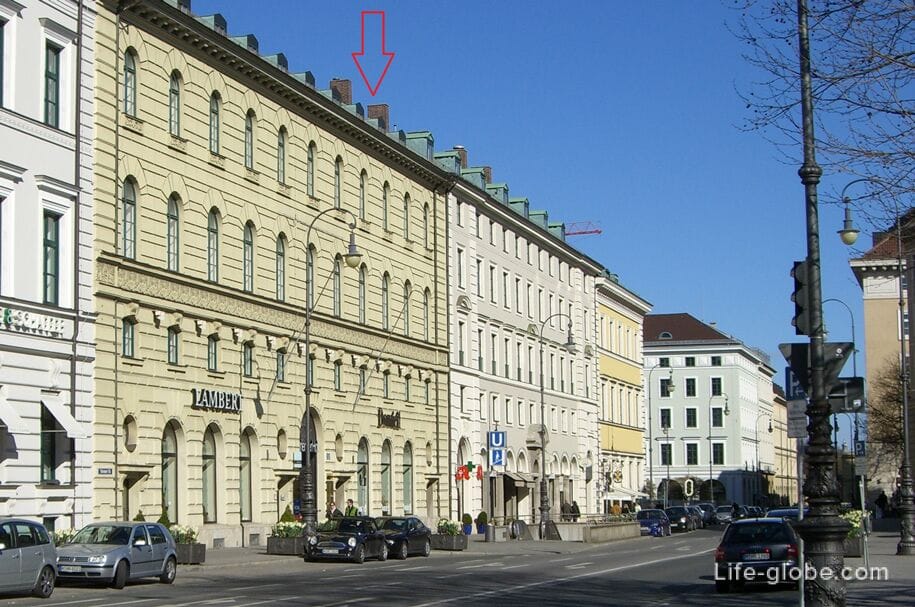
The Palace of Almeida (Almeida Palais) was the most outstanding of all the palaces on the street Brienner.
The Palace was built for the Baroness of the middle class Sophie Beirsdorf in 1824 in the style of French classicism Jean-Baptiste Metiram on the site of the former Church of St. George.
The house was inherited by daughter Sophie and the building later became the name of her husband, the count d Almeida.
The structure of the facade is based on a sample which had been circulated since the time of the architect Joseph Effner (16-17 century): with three floors, nine window axes and a flat Central projection with pediment.
After serious damage during the Second world war, the building was remodelled in 1952-1953 with the restoration of the facade in its original form, but with a flat roof.
Today the building is used for office and commercial premises. The courtyard of the former Palace is open to the public and can be rented for events.
Building address: Brienner Straße 14.

Memorial to the victims of Nazi tyranny (Denkmal für die Opfer der NS-Gewaltherrschaft) was established in 1985 by the sculptor Andreas Sobek in memory of the victims of the national socialist dictatorship.
The memorial is located on the square of Victims of Nazism (Platz der Opfer des Nationalsozialismus) on the corner between the streets of Brienner Strasse and Maximiliansplatz (Maximiliansplatz).
Initially in the square, instead of the current memorial, placed a granite memorial stone dedicated to the "Victims of the resistance to national socialism", which was developed by a German stonemason and sculptor Carl Periderm in 1962, and after reconstruction of the area in the early 1980-ies, the stone was moved to Liberty square (Platz der Freiheit).
Memorial to the victims of Nazi tyranny has a height of about six meters. Consists of a stele, the top of which is closed slatted steel cube in which the eternal flame burns.
In 2014, for a memorial was a bronze plate with a length of 18.5 meters and a height of 1.30 meters with the inscription "In memory of the victims of national socialist tyranny."

Palace of Berchem (Berchem Palais) was built for count von Berchem in 1819.
After the destruction during the Second world war the building was restored in a simpler form. Inside are preserved staircase with stucco decoration.
Building address: Brienner Strasse 22.
Belair house (Haus Böhler) was built by Gabriel von Saglam in 1904-1905 and was a residential and commercial building, art historian and antique dealer Erwin Rosenthal.
1956 in front of the building there is a fountain "globe" (Globusbrunnen), created by the architect Werner Kraus.
Building address: Brienner Strasse, 26.
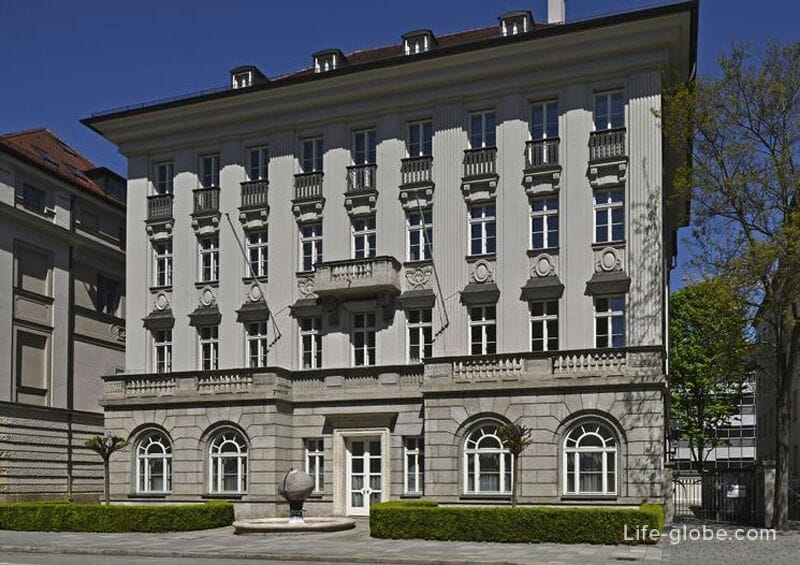
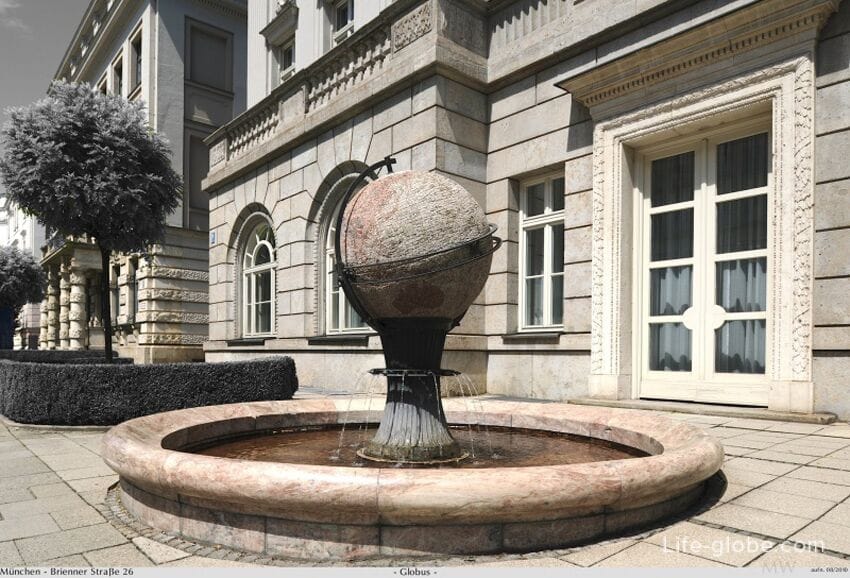
Square Karolinenplatz (Garage) was built by analogy with the Paris Star square and named after the second wife of king Maximilian I Princess Caroline of Baden.
The area is known primarily due to the high 29-metre-high obelisk that stands in the center of the square and is called "Obelisk of Karolinenplatz" (Obelisk Karolinenplatz am).
The obelisk was erected in 1833 as a memorial to soldiers of the Bavarian soldiers who perished in the Russian campaign of Napoleon in 1812. Read more about Karolinenplatz and the obelisk...
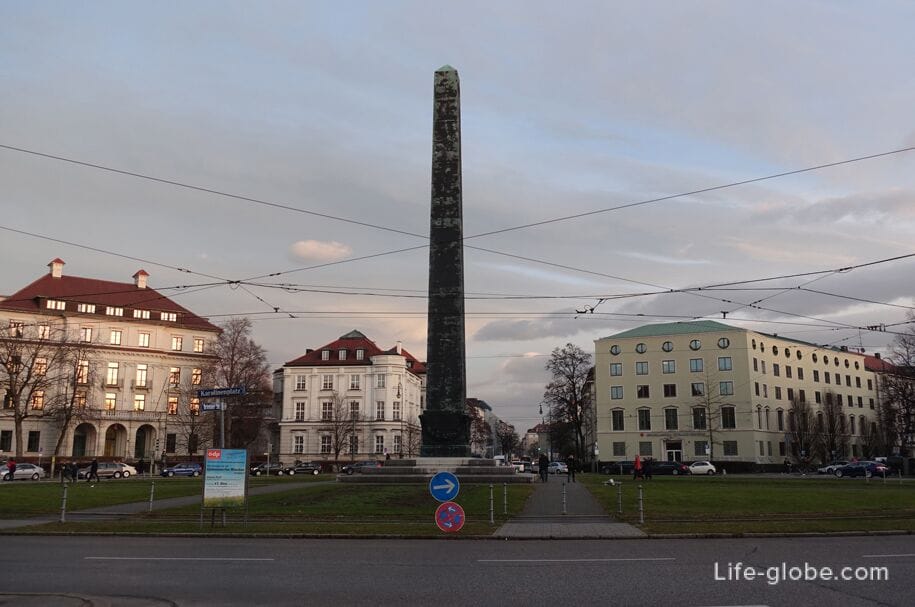
In addition to the obelisk on Karolinenplatz located:
- former Palace of Torring - Seefeld (Palais Toerring-Seefeld), constructed by the architect Carl von Fischer in 1812. De facto, the new building architect Carl Cella, built in 1946. Address: Karolinenplatz 4;
- Palace of Prince George (Prinz-Georg-Palais / Prince-Georg-Palais), built according to the plans of Karl von Fischer. Address: Karolinenplatz 5;
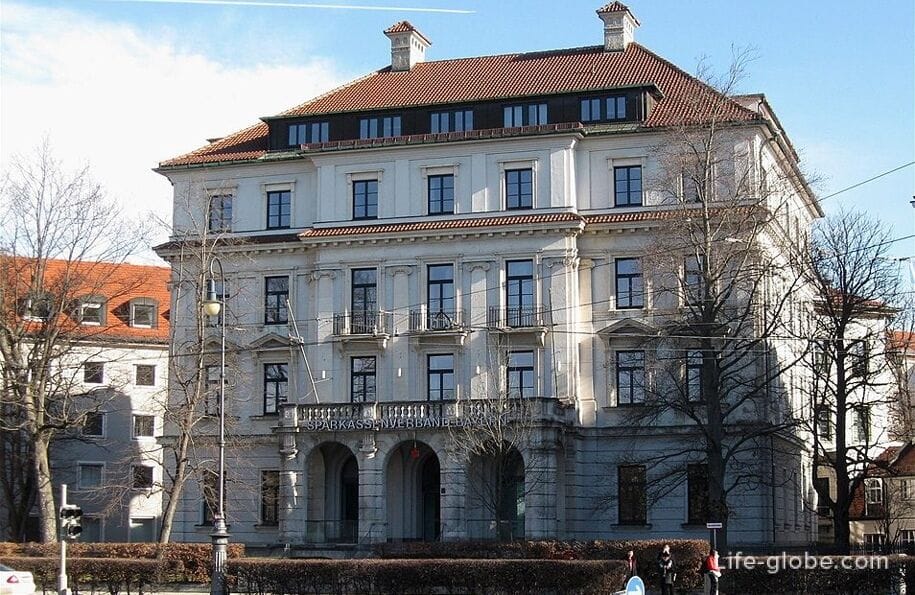
- the building of the Munich stock exchange (Bayerische Börse / Börse München) - the former Villa Hutschenreuther, built in 1894 in neo-Renaissance style by Ludwig Dagmara. Address: Karolinenplatz 6.
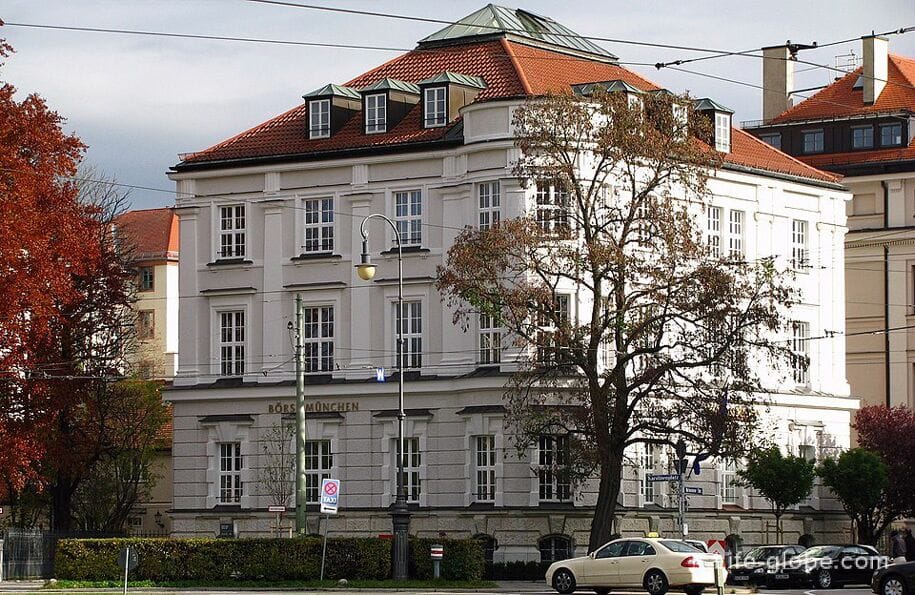
Documentation centre Nazi party or Nazi documentation centre (NS-Dokumentationszentrum) is located along Brynner and focuses on the history and consequences of the Nazi regime and the role of Munich as the "capital of the movement" national socialism.
Today's centre was built in a historically important place - the place where was the former "Brown house" (Braunes Haus / was Brounes house), which was purchased in the 1930s for the Nazis and structured in the headquarters of the National socialist German workers ' party.
Address: Max-Mannheimer-Platz 1 (Max-Mannheimer-Platz). Site: ns-dokuzentrum-muenchen.
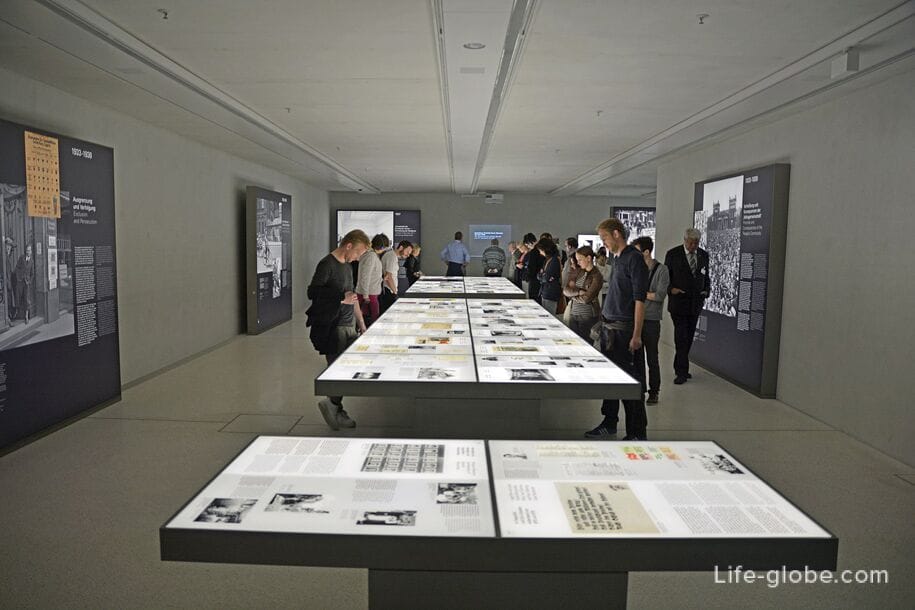
Royal square (Königsplatz / Königsplatz) was created in the style of European classicism in the 19th century by the German architect Leo von Klenze by decree of the Bavarian crown Prince Ludwig I as the "Place of culture".
The area was named in the line leading to it from the street Queen / Königinstraße (today's street Brienner Strasse).
Today the Royal square is an open space with large lawns, where in summer to carry out different activities, also among locals and guests of the city. Read more about Royal square...

At the Royal square located:
- Propylaea (Propyläen) is a historical monument, which is a former gate (the front passage), built by the German architect Leo von Klenze in 1862.
Munich Propylaea is made in purely classic style, with outer Doric columns, a portico with a triangular pediment and two towers.
The reliefs and sculptures of the gate is depicted, including scenes from the Greek war and the victory celebration. Read more on the Propylaea...
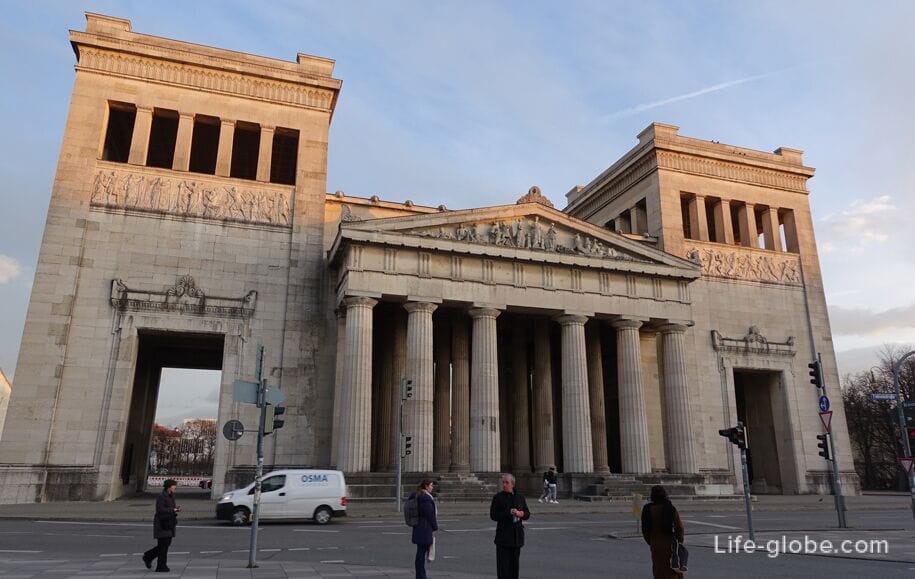
- Glyptotek Museum (Glyptothek) - Museum of ancient sculpture and glyptic.
The building was built from 1816 to 1830 on the projects Leo von Klenze for Ludwig I order to accommodate personal and family collection of Greek and Roman sculptures.
During the Second world war the Glyptothek was destroyed. Then the building was restored in a more simple form.
The collection of the Glyptothek, includes works of art from four eras, from archaic period (circa 650 BC) to late Roman (circa 400 BC).
The Glyptothek Address: Königsplatz 3. Read more about Glyptothek...
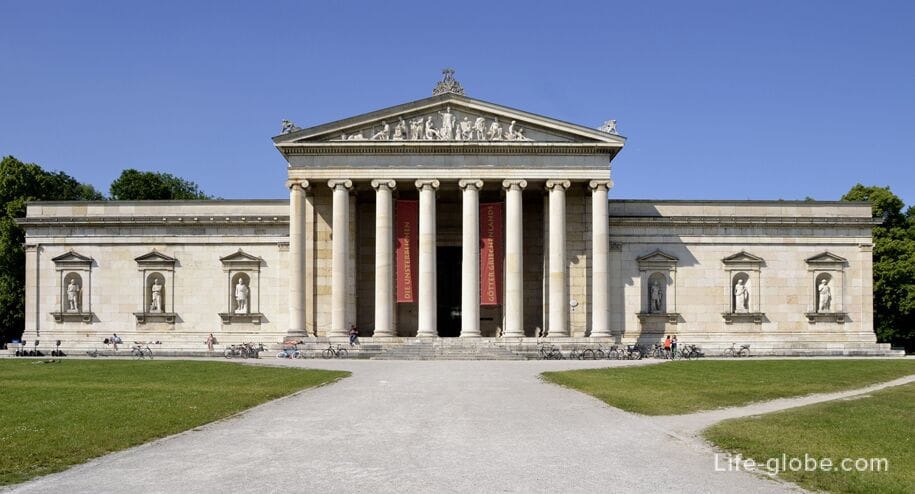
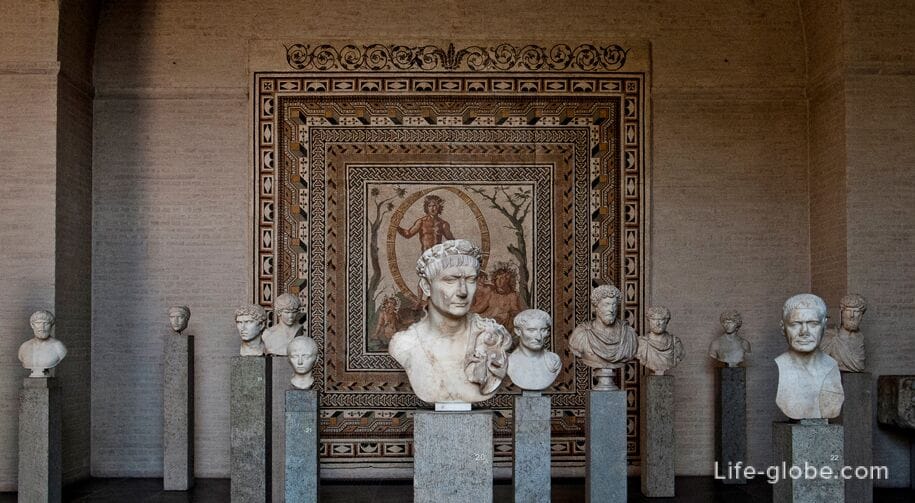
- State antique collection (Staatlichen Antikensammlungen) is a Museum, which houses a collection of antiquities Greek, Etruscan and Roman art.
The Museum building was built according to the plans of architect Georg Friedrich Riblanda between 1838 - 1848 years in the Corinthian style of the temple by order of Ludwig I.
Museum collections date, including, items of BC, and are of Greek, Etruscan and Roman art and objects of everyday life: portraits, ceramics, vases, bronzes, terracottas, glass, jewelry and precious stones.
Address: Königsplatz 1. Read more about State antique collection...
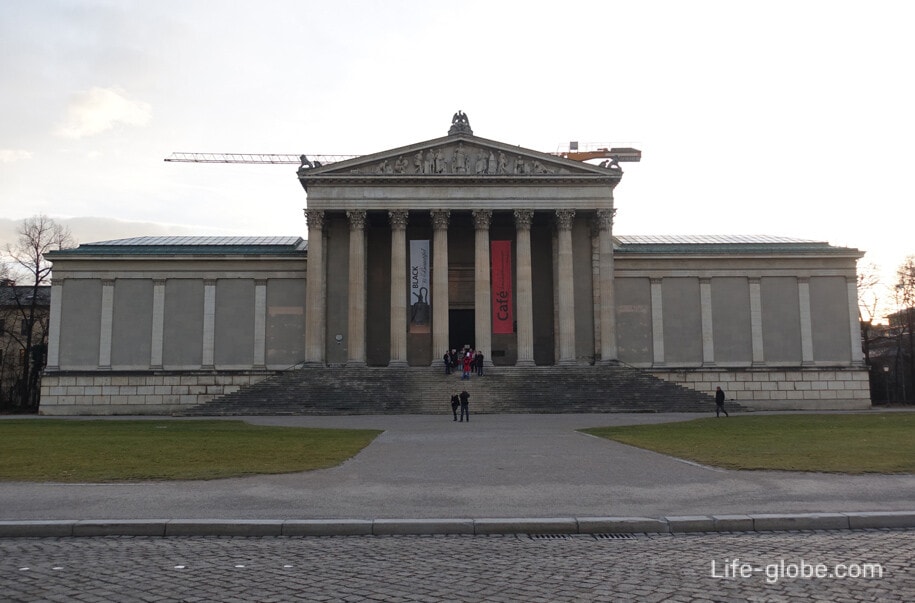
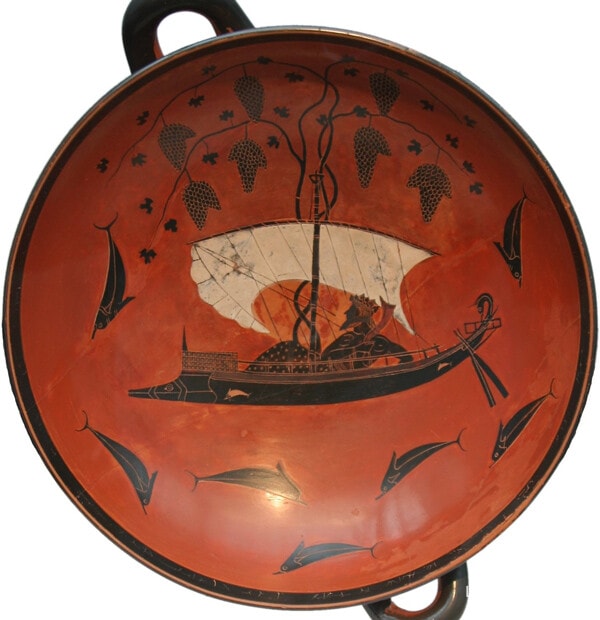
Municipal gallery in Lenbach house (Lenbachhaus Städtische Galerie im) - art Museum located in the former house-Villa of the German portrait painter Franz von Lenbach (1836-1904) was with a modern annexe.
The Museum's collections contain a variety of the Munich artists, especially the 18th - 19th centuries.
Also, the Museum hosts temporary exhibitions of modern Bavarian and international artists.
South facade of the extension of the gallery facing the street Brynner.
Gallery address: Louisenstrasse, 33 (Luisenstraße). Read more about the gallery in the Lenbachhaus...

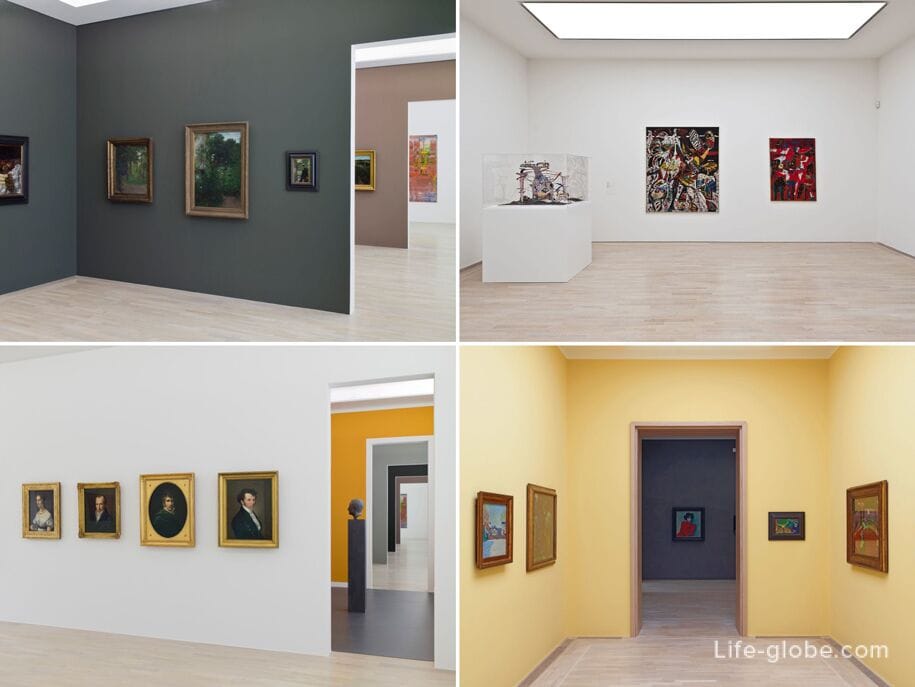
5-star Rocco Forte The Charles hotel overlooking the old Botanical garden.
In the hotel: Spa with indoor pool, sauna, steam bath and fitness room; soundproof rooms with free Wi-Fi; restaurant; bistro with a terrace and a bar; a private garage.
The rooms and suites: air conditioning, flat-screen TV, a bathroom with bath and separate shower. Link to the hotel
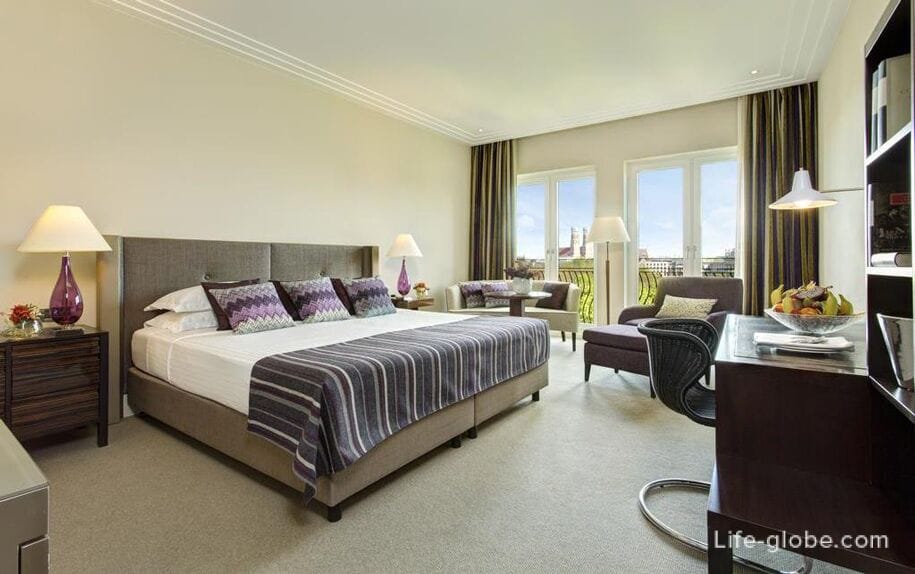
5-star hotel Bayerischer Hof with 5 restaurants, 6 bars and a Spa with a rooftop pool, sauna and gym.
The rooms and suites: air conditioning, high speed Wi-Fi. Complimentary fruit basket and bottle of mineral water. Link to the hotel
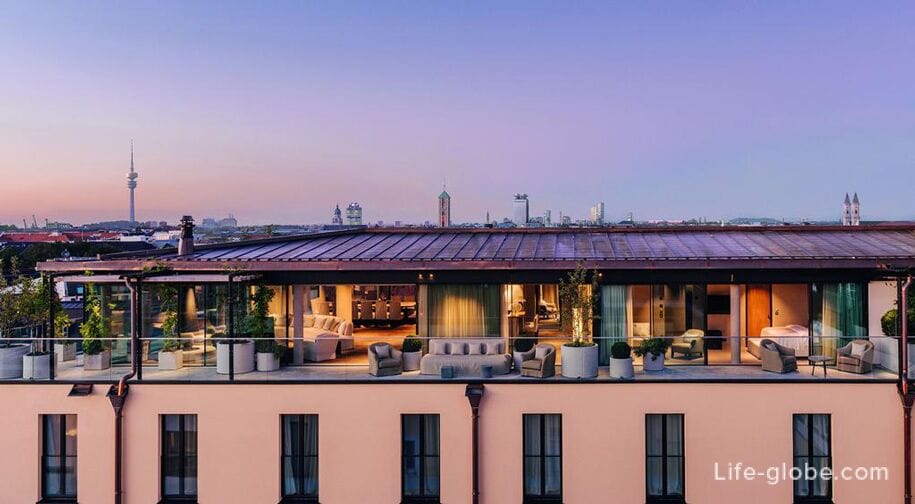
The family-run hotel Antares with Parking and Wi-Fi throughout.
The rooms: the flat-screen TV, soundproof Windows and doors. The private bathroom has a Hairdryer.
Room rates include Breakfast. Link to the hotel
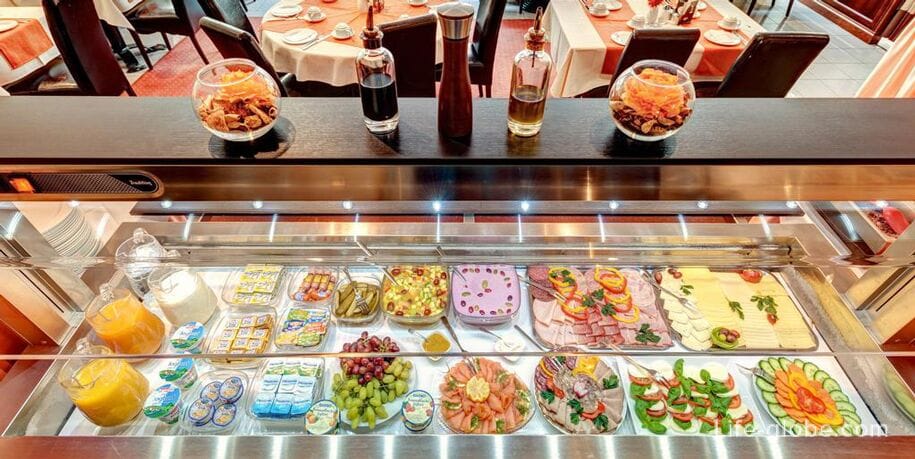
Stylisch apartments eingerichtete Wohnung mitten with free Wi-Fi, heating and air conditioning.
In the apartment: bedroom-equipped living room with sofa bed and kitchen, bathroom, Hairdryer. The link apartments

All accommodation in Munich, including near the street Brynner Strasse, you can view and book here